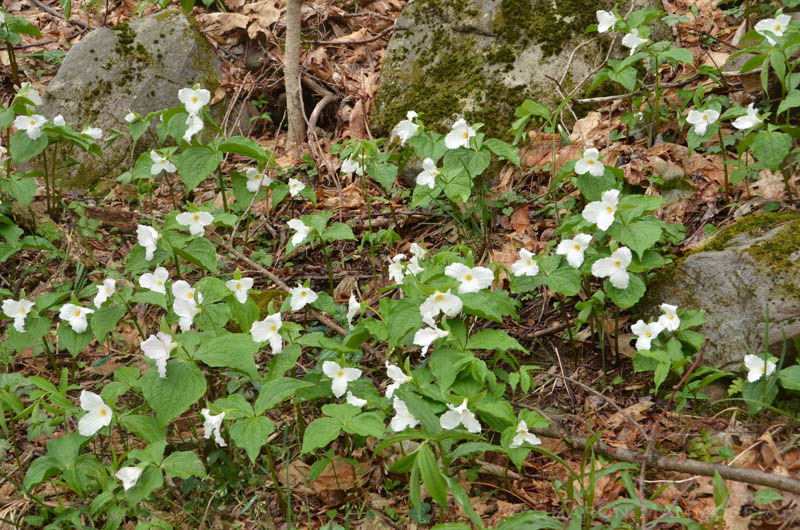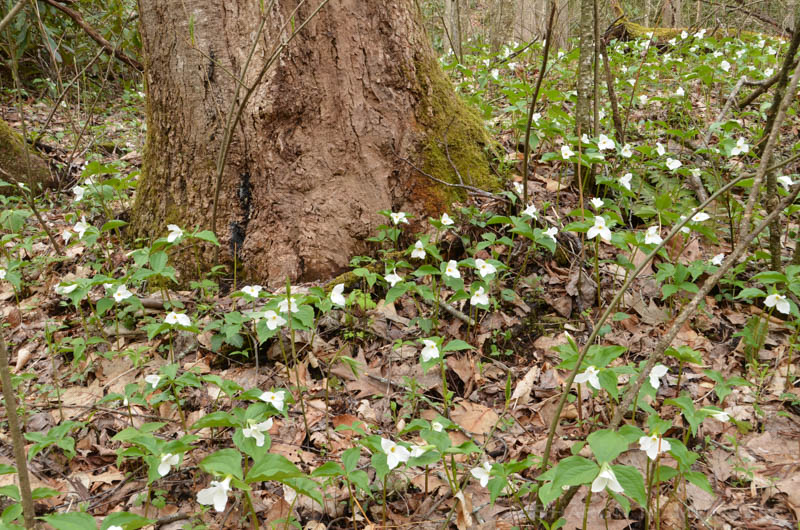Did you know there are 43 species of Trillium throughout the world, with a whopping 38 found in North America? How many of these have you seen in a forest near you? Which one is your favorite? Did you know that picking a flower of Trillium will cause the plant to not flower for several years? That’s because when the flowers are present the plant is collecting nutrients to survive until the following year. If the flower is gone, the plant can’t get the necessary sunlight and nutrients and so many take years to recover, or, it may never recover at all. So please, help me spread the word not to pick the trilliums!

A handful of people last week correctly identified the puzzler as simply a Large Flowered Trillium, Trillium grandiflorum, that had turned pink with age. It is also known as White Trillium, Great White Trillium, and White Wake Robin. Years ago while taking a spring wildflower class, I learned that the flower petals turn pink to signal to pollinators that they can move on. However, I had some trouble verifying this online with multiple resources, though I did find a few brief references to this idea.

Trilliums are extremely long-lived plants, able to live for 25 years. They don’t even reach flowering size until 7-10 years of age! Large Flowered Trillium is pollinated by bumblebees, wasps and honeybees.

So let’s do another flower–this one is also pink and white, but found on a shrub. It blooms at the same time the blue ghost fireflies are active–mid May into June. See if you recognize it.


